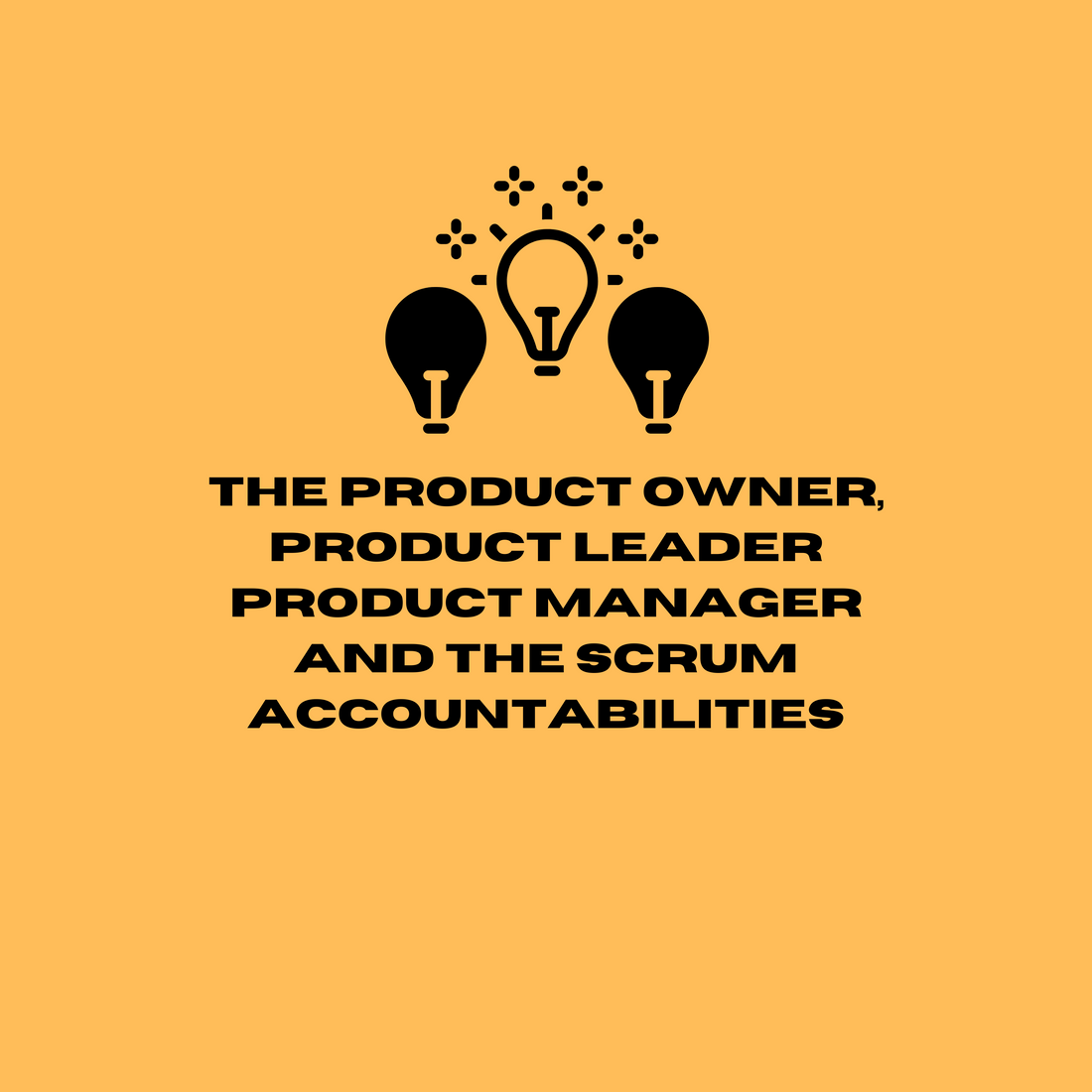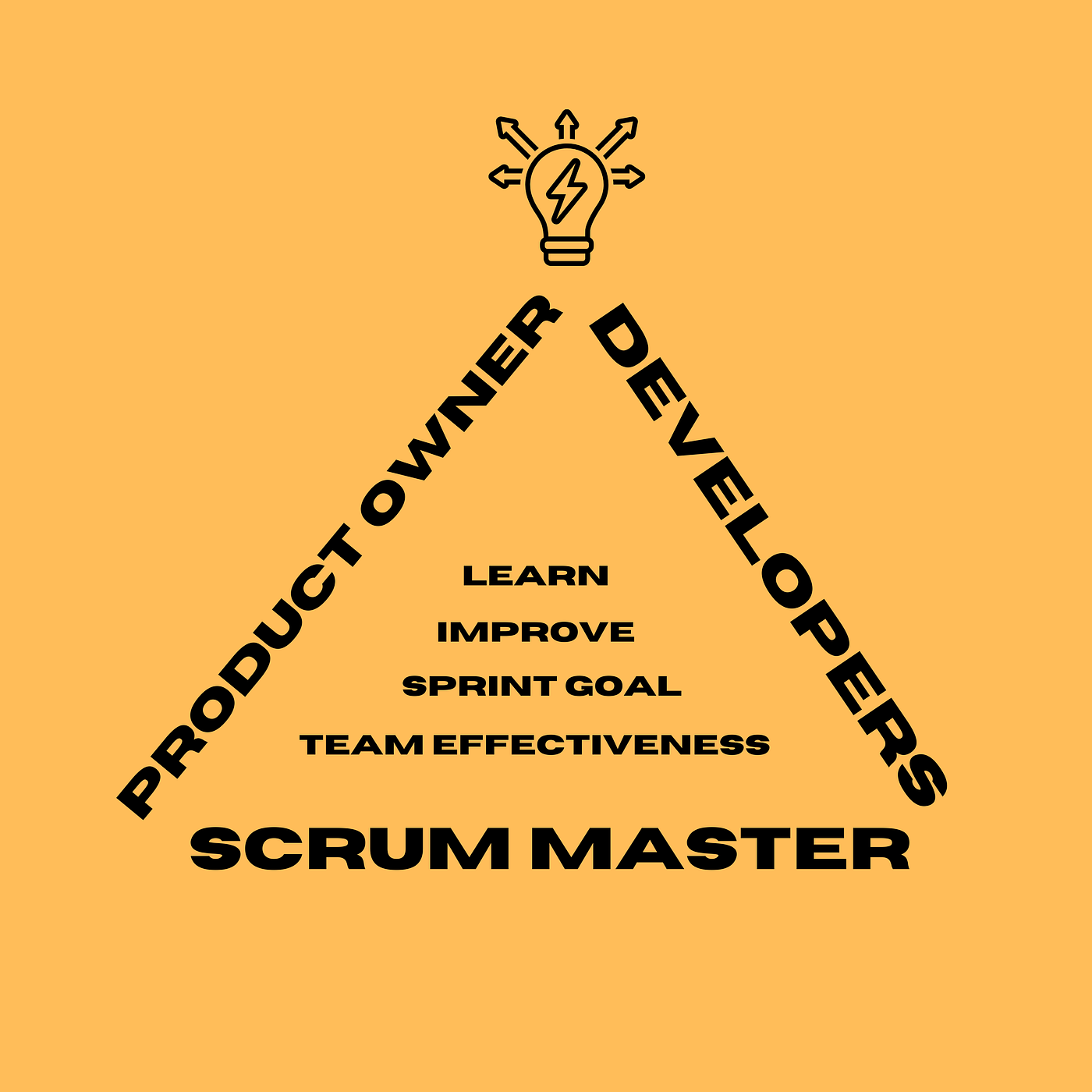
The product owner, product leader product manager and the scrum accountabilities
Share

Disclaimer
I welcome product managers and product leaders to the session in my product owner classes. However, there are differences between product owners, product leaders, and product managers. When people come to my class, I’m not teaching them about product management or product leadership. I might introduce them to some concepts in the same space, but I would not want people to believe that I have taught them about product management or product leadership.
Marty Cagan, with his Silicon Valley product group, has a great set of workshops to help people understand more about product management and product leadership.
Preliminaries

What does a product leader do? (At least my understanding of what a product leader does)
When thinking about a product leader, I want you to imagine a situation where:
- we have a product, a vehicle for delivering value; and
- that is recognized by the customer or end-user i.e., that you understand what it is, and when you mention it, they know what you’re talking about; and
- they pay for it, either with their money, their time, or their data.
Somebody is producing it, and somebody is consuming it.
So if you have:
- a real product; and
- that product is externally facing, just like I mentioned; and
- if you have multiple teams working on that product…
…you are going to have a situation where you might have multiple product managers.
If you had product managers working in teams, the product manager might act as a developer and a team.
A tech lead from a product management point of view would operate as a developer from a Scrum point of view. The design lead would act as a developer.
From a Scrum point of view, there’s a bit of tension between Scrum and product management because, in Scrum, there are no defined roles.
That said, Kanban and Kanplexity are other options to consider to avoid that tension.
In a multi-team situation, if you have product managers and teams, you still only have one product owner from a Scrum point of view, and you probably only have one product leader.
There’s a lot of overlap.
Below is a Venn diagram of the accountabilities in Scrum and then overlapped on top of the product leadership responsibilities.

Product Leader

The first thing I want to note is that the product leader operates in the problem space and the discovery space.
Product leader also gets involved in discovery to deliver.
What do we mean by the problem space? Many people ask what’s the point in delivering if you don’t understand whether you haven’t discovered whether we can actually get that value, whether people actually want that.
But even discovery is mute if we’re looking at the problem through the aperture of a solution, as Indi Young would say.
Sometimes you need to understand more about what problem we’re trying to solve without wanting to make it sound like we’re doing any big design up front or anything like that. We do need to make some effort to really understand the problem, and the product leader is really strong in that space.
For example, they might have:
- something like a briefing document in terms of explaining, e.g., there’s a one-pager explaining what problem we’re trying to solve and what the options are, etc.
- a business model in the product or a class. We often make a lean canvas, for example, and we often make a customer value proposition. Those two concepts are really from the product management space.
- speak the lingo. It’s not good enough to be good. We need to be perceived to be good. Do we really understand the lingo of our stakeholders in other departments in the company and also our customers and end users?
- a roadmap. And would be very comfortable showing a roadmap, maybe over a number of years.
The product leader would also act as a performance coach. I like what Marty Cagan says “A product leader is only as good as her worst product manager”.
Product Manager
So the product manager is somebody who needs to be performance managed, just like every developer on the team needs performance management.
Further, there’s a product wall as well, a concept from product management where you go to one place where you see all sorts of information about what’s going on with the product.
The product manager, in particular, will be looking at the customer analytics, product backlog management, even though it’s owned by the product owner, would typically be delegated to developers in a very good scrum team.
Product Owner & Product Leader
There are some things that a product owner would do that a product leader would also do. For example, creating a vision in product management. I don’t hear much talk about protocol, but in Scrum, there would also be a protocol, which would be an intermediate step toward the vision.
If there was a vision, and I guess that’s sort of aligned with the whole idea of a strategy as well. The strategy is, “You want to implement that vision, and the product goal could be one step towards that”.
The product owner, just like the product leader, would maximize value and manage expectations in relation to uncertainty. They bring lots of market knowledge and would be killing products.
That was one of the first things that Steve Jobs did when he went back to Apple. He killed lots of products so that the organization could be really focused. The product leader and proper product owner would scout for unmet needs, try to understand satisfaction gaps, and, most importantly, say no.
There are other aspects as well, like inspiring people. That means you need to be inspired yourself. You need to observe, you need to listen, you need to learn, you need to improve, and you need to be able to support the whole notion of self-management. But the scrum master will be helping you with some of these inspiring people, observing, listening, learning, improving, and self-management.
The scrum master would also help the product leader in terms of the following:
- facilitating team effectiveness;
- being an agility mentor;
- being a complexity coach;
- acting as a change agent; and
- removing impediments.
In addition, developers and product owners would also take on some additional responsibilities. If you had one, the product manager might be taking on some of these ideas in the set of developers on a scrum team.
I would be expecting if you did have that triad Marty Cagan refers to of:
- tech lead;
- design lead; and
- product manager.
If you did have that kind of responsibilities within a Scrum team, those people could really do a very good job of leading on that product management and facilitating the situation where the rest of the team really has a common understanding of what it is we’re trying to achieve, how we’re going to solve problems for customers and end users, and how we are going to avail opportunities.
Product Owner

Don’t get stuck in doing all the time; pause to think
There’s a lot of time to think as well. Be careful that we don’t do it all the time. Don’t always focus on delivery. There’s also discovery.
Think about what we need to do; the developers, the product owner, and the product leader will be focusing on what we are actually going to deliver that’s going to deliver on the why. That vision and the strategy to implement that vision, which might be implemented partly through a protocol.
Focusing on the “how”
In addition, developers would focus on the how. The product manager, tech lead, and design lead, from a product manager's perspective, would be very involved in that.
They would be involved in sizing with the rest of the developers in the team, and they would make sure they deliver a done increment.
Concluding Remarks
In Scrum, there’s a definition of done, and I hope that when product management and Scrum merges, the whole concept of done doesn’t get squeezed out like mustard out of a hot dog when you try to take a bite out of it.
So the developers on the team, of which you would have a tech lead, design lead, and product manager from a product management perspective, would build and deliver it.
In addition to this, the product needs to be supported. But one of the things that Scrum would do that I don’t see mentioned so often is product management is the whole idea of a sprint goal. The sprint goal and the product goal are mandatory in Scrum.